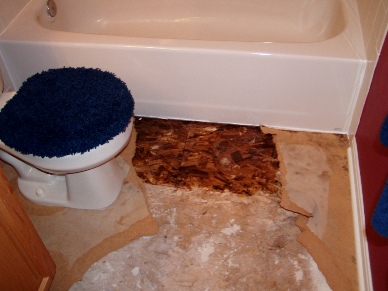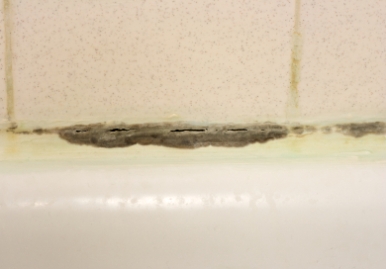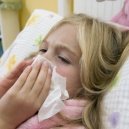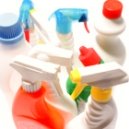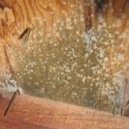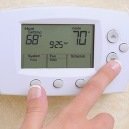Find a pre-screened local mold removal specialist Free Estimate
Find a Mold Specialist Now
Click or Call, Toll-Free 24/7
Bathroom Mold Prevention
One of our most compelling responsibilities in maintaining a healthy home is bathroom mold prevention. Not only does bathroom mold look unsightly and cause your bathroom to have an unpleasant, musty odor, having mold in your bathroom can also make you sick. Exposure to mold in bathrooms is associated with all kinds of respiratory disorders, trouble breathing, asthma attacks, allergic reactions, and several other health problems such as strep throat or various infections.
Common Types of Mold Found in Bathrooms
Bathrooms, because they are usually warm, dark, and moisture laden, provide an ideal environment for mold. There are many different types of mold commonly found in bathrooms, including the following:
Alternaria is a type of mold frequently found in showers, behind leaky toilets, and under sinks with leaky pipes. Many people are allergic to alternaria and it can also cause asthma attacks.
Botrytis is commonly found in bathrooms with poor ventilation, and like alternaria, it can cause allergic reactions and asthma attacks.
Cladosporium is a type of mold sometimes found on carpet in bathrooms and also on wooden surfaces, like bathroom cabinets, that have gotten damp. It can cause respiratory disorders and difficulty breathing.
Stachybotrys chartarum, sometimes called black mold or toxic mold, is found in places that stay damp a lot, like poorly ventilated bathrooms. It can cause numerous respiratory problems, including pneumonia and bleeding in the lungs.
Trichoderma can sometimes be found on damp carpet and wallpaper in bathrooms (wallpaper paste, which usually contains starches, is like “miracle grow” for mold). It can cause respiratory problems similar to those caused by stachybotrys chartarum. In addition, many people are allergic to trichoderma.
Bathroom Mold Prevention
Bathroom mold prevention requires simple maintenance procedures that almost anyone can perform:
- Turn on an exhaust fan or open a window a few inches when showering, since the steam from a hot shower creates the type of warm, humid environment that encourages mold growth.
- Wipe up any water that spills or splashes on the floor immediately.
- Don’t use carpet in bathrooms. Use throw rugs instead, which can be hung up to dry if they get damp. When you do hang throw rugs up, don’t hang them in the bathroom. This just transfers the moisture in the rugs to the bathroom air. Also, don’t forget to dry the floor under any damp area rugs.
- Check for leaks behind the toilet and under the sink regularly and repair any leaks promptly. A good suggestion when it comes to sinks and toilets is to replace the standard water supply lines with braided metal water lines. You can also place water leak sensors in these areas to alert you of any leaks as soon as they occur.
- Check your tile grout regularly for any signs of cracking or weakness. Also look to make sure that any caulking around bathtubs or shower enclosures does not have cracks or gaps. If water gets behind your ceramic tile, you can get mold inside the walls.
- If you choose to paint your bathroom walls, use mold resistant paints on them. These paint products come in a wide variety of colors.
- Consider installing a dehumidifier in bathrooms that have showers. Purchase a dehumidifier that has an auto-control feature so it monitors the humidity and turns on and off as humidity levels change. Here you can find more information on selecting the right dehumidifier.
Getting Rid of Bathroom Mold
If you do find mold in your bathroom, it needs to be taken care of it as soon as possible. It will only get worse and possibly spread to other areas of the home. A quick and thorough remediation effort will save you from spending additional money because over time the problem always worsens. This will also keep you and your family members from getting sick due to extended mold exposure.
If the amount of bathroom mold is minor you can remove it yourself. There are many bathroom cleansers designed to eliminate mold and mildew and prevent their return. These usually work well on non-porous surfaces like tubs, sinks, toilets, vinyl flooring and ceramic tile. Most of these produces can be found on Amazon.
If you have mold on your bathroom carpet, you should remove the carpet. Carpet in a bathroom is never a good idea. Mold requires not only water, but also an organic food source. The carpet backings that hold the carpet fibers together contain latex, and latex is an organic food source for mold. If you continuously drip or spill water onto carpets, and the carpet is not dried in a reasonable amount of time, mold will begin to grow.
It can be very difficult or impossible to remove mold from drywall. If there is mold on your bathroom walls, there may be mold inside the walls, as well. The paper backing on both sides of the drywall provides the organic food source for mold. Because drywall is porous, the mold will grow through the drywall and will more than likely be growing on both the inside and the outside of the drywall. Often insulation and drywall must be removed and replaced when contaminated with mold.
Before beginning any type of mold removal job in your bathroom, you should put up a containment barrier to stop the spread of mold spores to other rooms in your home. Bathrooms are usually small with only one entrance so this is an easy task to accomplish. The bathroom should also be placed under negative air pressure. This causes air to be sucked into the room and prevents mold spores from escaping the containment.
As you can see, mold remediation can be a complicated affair. If you have a significant amount of mold in your bathroom, you should consult with a mold remediation professional before beginning the cleanup process. You can talk to a local mold removal expert and schedule an in-home consultation. The service is free with no obligation, so you have nothing to lose. Follow the link to find experienced mold remediation professionals in your area.
Return From Bathroom Mold Prevention To Our Main Prevention Page
Free Home Inspection By A Mold Removal Specialist
Search This Website
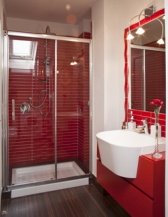
Recent Articles
-
See Our 5 Recommended Mold Removal Companies in Covington, KY
Apr 16, 25 12:59 PM
-
See Our 5 Recommended Mold Removal Companies in Wheaton, IL
Jun 20, 24 10:33 AM
-
See Our 5 Recommended Mold Removal Companies in Aberdeen, SD
Oct 08, 21 04:05 PM
